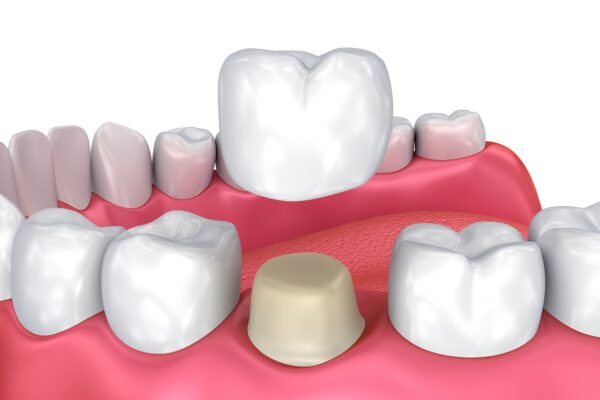Counseling has long been a huge part of society. However, it has taken a different form with the advent of modern living. In the past, older family members and community leaders would provide guidance, nut now, in the modern world, family members often live far apart. That’s where modern psychiatry comes in. Mental health professionals have taken up the role of traditional counselors to guide children and adults.
However, counselors don’t take a one-fit-all approach. There are some distinct differences between child/adolescent counseling and adult counseling. These include the environmental setting, legal and ethical considerations, and so much more. Keep reading to discover these differences.
Communication differences
One significant difference between child/adolescent counseling and adult counseling is communication. While not all adults are excellent communicators, they tend to express themselves better than adolescents. The latter might have somewhat limited communication skills.
Besides, the two groups have language and vocabulary differences. Adults are likelier to use clear, formal language to articulate their thoughts and feelings. On the other hand, adolescents may use slang and abstract language to express themselves. Therefore, therapists working with adolescents must immerse themselves in slang and colloquial language to avoid disconnection.
Additionally, there is a difference between the two groups in terms of the use of nonverbal communication. Adults tend to be more guarded, so they might have better control over their facial expressions. Adolescents might make nonverbal cues involuntarily, and these make up a large part of their communication. If a therapist misses these nonverbal cues, they might miss out on important information.
Another communication difference between adolescents and adults in therapy is emotional volatility. Adolescents can be more reactive. Since they are still learning to express their feelings, they might not always have the proper wording for their experiences. That calls for some creativity from the therapist. They must find other ways to connect with the adolescent besides words.
Ultimately, adolescents might have challenges trusting figures of authority. In this case, the they might view the therapist as a figure of power, making it hard for them to open up at first. Therefore, the counselor has to work extra hard to establish trust with adolescents. In contrast, an adult in therapy might build a relationship with the therapist faster.
Environmental setting
Another distinct difference between adolescent counseling and adult counseling is the environmental setting. In most cases, adolescents access counseling services in school as this is where they spend most of their time. On the other hand, adults access these services in a clinical setting. They can also go to the counselor’s private office. Therefore, adults enjoy a level of privacy that might elude adolescents. For instance, an adolescent counselor might conduct sessions in a classroom or another communal space. Nevertheless, it is worth noting that adolescents might require more privacy than adults in some instances due to developmental issues. In such cases, the counselor must find an environment that makes the adolescent feel safe.
There are also some differences in environmental settings that appeal to the two groups. For adolescents, bright and colorful rooms might make them feel more comfortable. Adults tend to prefer a more laid-back room that exudes professionalism. Besides, adults often prefer structure, while adolescents might be inclined more toward exploration.
Counselors also need to give some thought to the cultural environment. For instance, an adolescent counselor needs to be sensitive and use inclusive language, which this might not be a significant concern when dealing with the older generation.
Issues handled
No matter the cohort, counseling has one goal—helping people enhance their well-being. That cuts across adults and adolescents alike. However, the issues they present in therapy may vary. One of the most prevalent issues among adolescents is anxiety. This pressure stems from issues like academic and social media pressure. Others might be struggling with low self-esteem and body image issues, especially since they are going through tremendous changes.
While it is possible for adults to struggle with the same issues, they may stem from different problems. For instance, their stress might be coming from relationship issues or the loss of a job. Therefore, therapists must take care when curating treatment plans to ensure that each group is handled adequately.
Legal and ethical considerations
There are several differences in legal and ethical considerations between adult and adolescent counseling. One of them is informed consent. The law allows adults to provide informed consent for counseling services. On the other hand, adolescents need to get consent from their parents or a legal guardian since they might not fully understand the potential risks of seeking therapy.
There is also a caveat in confidentiality when it comes to minors. For instance, the law might require adolescent counselors to break confidentiality if they believe the client is a danger to themselves or others. They can also break confidentiality if there is a case of child abuse. The law might also require counselors working with adolescents to acquire specialized training.
Parental involvement
When adolescents need counseling, parents are usually involved in the process. They can fill memory gaps to help the counselor paint a complete picture of the client’s childhood. The parent might also be given the mandate to ensure that the adolescent attends therapy diligently.
But there is more to it. The parents play a crucial role in ensuring continuity out of therapy. They ensure that their kids practice the skills and strategies learned at therapy.
This level of parental involvement is not seen in adult therapy. Sometimes, there is no external involvement at all. Adults have to find ways to integrate the skills and strategies in their day-to-day lives on their own.
Best practices in adolescent counseling
Working with adolescents in counseling has unique challenges. Here are some best practices that could help streamline the process:
- Deep listening
Deep listening is somewhat of a mindfulness practice that involves bringing your awareness to the present moment. By practicing deep listening, the adolescent will feel heard and understood. Therefore, they will start trusting their therapist, which makes it easier for them to speak freely.
It is worth noting that besides listening with their minds, therapists must also listen with their bodies. That means maintaining a physical posture of interest and appropriate eye contact.
- Asking the right questions
Questions are a great way for counselors to engage with adolescents. However, the wrong questions can lead to the adolescent stone-walling the counselor. The opposite is also true—asking witty questions works like a charm. Open-ended questions are an excellent place to start. They give the respondent a lot of room to share their experiences. That’s not to imply that close-ended questions don’t have a place in therapy. Some situations call for close-ended questions, such as when the teenager struggles to open up. Counselors can also resort to Socratic questions, such as, “What does that say about you?”
- Goal setting
Goal setting is essential when working with adolescents. It prompts them to think about their future. Counselors can help them set both short-term and long-term goals but must ensure that the goals are not too overwhelming.
- Collaborating with other professionals
Adolescent counseling, particularly school counseling, is a multi-faceted domain. Therefore, it’s essential that counselors collaborate with parents, teachers, and other professionals. This holistic approach with all these stakeholders on board makes the experience more comprehensive. These stakeholders can collaborate in creating a treatment plan to address multiple issues simultaneously. Besides, having multiple people on board brings the benefits of diverse perspectives. That leads to better outcomes for adolescents since they have more resources and support. Similarly, counselors can always learn from other people. The learning experience helps them adjust their approach to conform to prevailing situations.
How to become a counselor
A counseling career is incredibly rewarding. You get the opportunity to help others become the best versions of themselves. To get a state licensure or certification, you will need a CACREP-accredited master’s degree in counseling, like the one offered by Walsh University. Once you get your degree, you will need to participate in supervised fieldwork for a minimum number of documented hours. Then you will need to acquire counseling licensure or certification. Different states may have varying requirements, so be sure to check what you need. In most cases, the requirements are an accredited graduate degree program completion, practicum and internship hours during graduate coursework, and post-graduate supervised hours of practice.
The next step is choosing your career path since counseling is a broad field. For instance, you can decide to work with adults or go into child/adolescent counseling.
Advancing in your career as a counselor
There is so much room for advancement in the counseling profession. Common options include going into research, rising to administrative positions, and opening a private practice. You can also set yourself apart in the field by honing your soft skills, such as listening and communication skills. It also helps to join professional counseling organizations to build your network.





